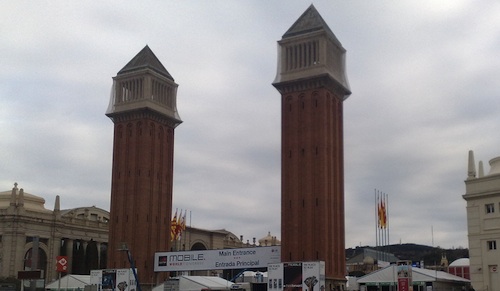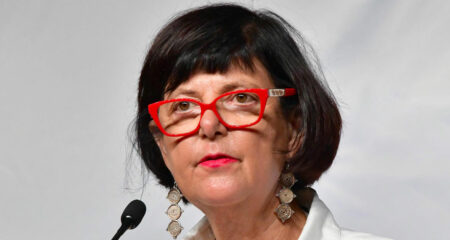
Spain has just reported its first quarter of negative growth in two years, but Barcelona feels like a boom town this week as it plays host to the Mobile World Congress (MWC), the telecommunications industry’s biggest annual trade fair. The number of smartphones, mobile-broadband connections and app downloads continues to shoot up, seemingly untouched by the economic turmoil elsewhere. Amid the deluge of product launches and announcements this week, a few themes stood out.
The rise of LTE
Fourth-generation (4G) telecoms networks based on a technology called LTE, capable of delivering data at least ten times faster than existing 3G networks, are coming. Handset makers proudly showed their LTE-capable phones, and Telefónica, Spain’s incumbent operator, switched on an LTE network in Barcelona to demonstrate its blazing download speeds. True, networks always perform impressively when hardly anyone is using them. And Europe is embarrassingly behind America in its embrace of LTE, with no Europe-wide agreement on how to allocate spectrum for the technology, and national regulators each taking their own approach. But the momentum behind LTE is clear.
Apple, the ghost at the feast of MWC (it never appears at trade shows), is rumoured to be about to bless LTE by supporting it in the iPad 3, which is due to be announced on 7 March. Handset makers and network equipment vendors are looking forward to a lucrative upgrade cycle.
Not the iPad 3
Apple’s shadow loomed over MWC in another way, as several companies launched and demonstrated tablet computers that tried, in one way or another, to avoid competing directly with Apple’s market-leading iPad. Samsung unveiled the Galaxy Note 10.1, a 10.1-inch tablet that is completely different from the iPad, honest, because it has a stylus that can be used to draw or write on the screen. Quite fine detail is possible with the pen, though the handwriting recognition leaves much to be desired.
Asus, a Taiwanese firm with a track record of inventing funny-shaped gadgets, outdid itself with the Padfone, an ingenious product that allows a pocket-sized smartphone to turn in a fully-fledged tablet. The phone fits into a slot on the back of a giant touchscreen-and-battery enclosure. The phone’s processor then switches to using the large screen, reconfiguring its software accordingly. Pop it out of the slot and it goes back to being an Android-powered smartphone again. There is also an optional keyboard which transforms the tablet computer into a laptop. Take that, iPad!
Other handset makers steered around Apple in a different way, showing giant smartphones that double as mini-tablets. (Apple’s late boss, Steve Jobs, once said that the iPad’s 9,7-inch screen is “the minimum size required to create great tablet apps”, though the company could yet change its mind.) Samsung has championed the tablet-phone design with its Galaxy Note phone, launched last year, which sports a screen measuring five inches diagonally, and other handset makers, including LG Electronics and HTC, have now followed suit with huge phones of their own. These handsets look pretty odd when held up to one’s ear, but voice calls have now become a relatively minor feature of modern smartphones, so that hardly matters.
Pretty pictures
Jaws dropped when Nokia unveiled the 808 PureView, a phone with a 41-megapixel camera. Yes, 41 megapixels, squashed into a handset that is only slightly lumpy at one end as a result. Nokia doesn’t really expect people to use the camera at its full resolution. Instead, the images are crunched down to the usual five or eight megapixels, but at much higher quality than an 8-megapixel cameraphone would produce. In particular, there is less noise and more detail in the shadowy parts of an image. Oddly, though, the 808 runs Nokia’s old operating software, which it is phasing out in favour of Microsoft’s much slicker Windows Phone software. Nokia representatives dropped heavy hints that the same imaging technology would eventually make its way to its Windows-powered phones, too.
Photo fans were also impressed by HTC’s new One X handset, which has an 8-megapixel camera and a dedicated image-processing chip. This means it can take still images (at five megapixels) while shooting uninterrupted high-definition video, and can also take photos in a rapid burst mode. Like many of the new handsets on display in Barcelona, the HTC One X is powered by a quad-core processor, which makes it amazingly snappy and responsive. But when it comes to clever imaging tricks, Samsung’s Galaxy Beam handset takes the cake: it has a tiny built-in projector, so you can bore people with your holiday photos or PowerPoint slides wherever you are by beaming them onto a wall. Will it catch on? Who knows. But its very existence illuminates the fact that this is an industry in which optimism, growth and new ideas continue to abound. — (c) 2012 The Economist![]()
- Image: xcaballe/Flickr
- Subscribe to our free daily newsletter
- Follow us on Twitter or on Google+ or on Facebook
- Visit our sister website, SportsCentral (still in beta)




